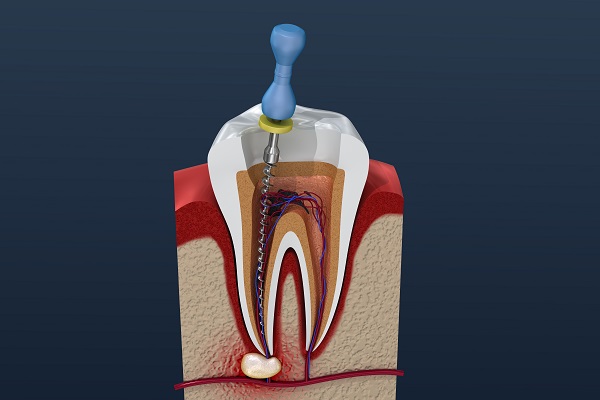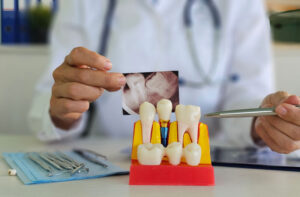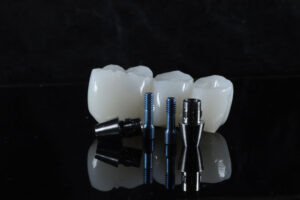What is a Root Canal Retreatment?
Root canal therapy is a thought that gives most people pause. Still, with terrible pain as a motivator, many of us dig deep and find it within ourselves to power through the procedure. After it is done, we leave the dentist's office pleasantly surprised at how painless the procedure was. Unfortunately, some people go on to experience further problems with the tooth that was treated with root canal therapy. That is where root canal retreatment comes in. Simply put, root canal retreatment is the treatment of a problem tooth that has already had a root canal done. You may be asking yourself how root canal retreatment is done and why anybody would have such bad luck.
Root canal retreatment FAQs
Here is a little bit of information that will answer your questions:
When would a person need root canal retreatment?
Root canal therapy is a way to save the outer tooth when the inner tooth becomes damaged or infected because of tooth decay. If all goes well, the treated tooth should remain in good condition for the rest of a person's life. The problem is, things do not always work out. A tooth treated with root canal therapy may heal badly. As a result, the tooth will start to fail and hurt in the weeks, months or even years after the root canal. The tooth could also develop a new problem.
There are a few reasons why a root canal could fail:
- A delay in placing a permanent restoration after the root canal
- Some canals in the inner tooth were left untreated because they are curved or narrow
- The patient had complicated anatomy of the canals that form part of the tooth's root (calcified root tips, curved root canals or narrow root canals)
- The root canal treatment did not seal the inner tooth off from saliva contamination. In the end, tooth decay sets in
- The treated tooth could get injured
- The restoration that seals the treated tooth could come loose or break off
- The treated tooth could develop tooth decay
What happens during root canal retreatment?
First, the dentist does a thorough exam to find the cause of the failed root canal. Usually, the exam involves x-ray imaging and a visual exam. Based on the exam results, the dentist will pick a suitable course of treatment. The dentist will go on to remove the tooth's restoration so that they can see inside the tooth. This can be considered to be part of the visual exam.
Next, the dentist will clean the tooth by removing any damaged or infected tissue. Once the inner tooth is completely clean, the dentist will fill the hole in the tooth and seal it with a dental restoration.
What is an apicoectomy?
If the dentist finds that the tooth has an unusual anatomy, they may choose to remove damaged tissue using a procedure known as an apicoectomy. An apicoectomy allows the dentist to reach parts of the tooth that they cannot access from the top of the tooth.
The dentist will instead access the tooth roots by making a small incision at the area of the gums covering said roots. They will proceed to remove the damaged tissue from the exposed roots. Once they remove all the infected or damaged tissue, they will suture the gum shut. As is the case with a standard root canal, the dentist will then seal and restore the tooth.
Our endodontist will help you, whatever the state of your tooth
If you are dealing with a failed root canal, our experienced endodontist will make sure to give you the best treatment possible. Drop by our San Antonio office or call us to make an appointment. Together, we will find the best course of treatment for that bothersome tooth.
Request an appointment here: https://www.preferreddentalcenter.com or call Preferred Dental Center at (210) 822-8500 for an appointment in our San Antonio office.
Check out what others are saying about our services on Yelp: Read our Yelp reviews.
Recent Posts
How Can Veneers Improve My Smile?
Only a few people have naturally flawless smiles, which is why treatments like veneers exist. Dental veneers serve as a simple yet effective method of improving the appearance of the smile. Mostly produced from porcelain material, the thin shells are bonded to the front side of the teeth to cover imperfections.To make veneers, the dentist…
Who Is A Good Candidate For All-on-4?
If you have lost your teeth to disease or injury, you have multiple teeth restoration options like All-on-4® dental implants. Replacing lost teeth is essential for proper oral health and function. Since the jawbone, gums and teeth all function as a single system, missing teeth usually have a domino effect, causing further tooth loss, gum…
What Is Sedation Dentistry?
Sedation dentistry allows people who are concerned about potential pain and discomfort to relax during dental procedures. Dental anxiety is common, especially among those who have an unpleasant history with the dentist. Fortunately, there are different sedation dentistry options to give patients a comfortable experience in the dental office.Sedation dentistry involves the administration of a…
Invisalign For Bite Issues
Originally, Invisalign® was only designed to address crookedness, crowding or spacing issues in the teeth. However, over the years, the technology has greatly improved, allowing for advancements when it comes to what issues it can tackle. A common question is whether or not bite issues can be addressed with Invisalign® clear aligners. Each patient is…
Recent Posts
How Can Veneers Improve My Smile?
Only a few people have naturally flawless smiles, which is why treatments like veneers exist. Dental veneers serve as a simple yet effective method of improving the appearance of the smile. Mostly produced from porcelain material, the thin shells are bonded to the front side of the teeth to cover imperfections.To make veneers, the dentist…
Who Is A Good Candidate For All-on-4?
If you have lost your teeth to disease or injury, you have multiple teeth restoration options like All-on-4® dental implants. Replacing lost teeth is essential for proper oral health and function. Since the jawbone, gums and teeth all function as a single system, missing teeth usually have a domino effect, causing further tooth loss, gum…






